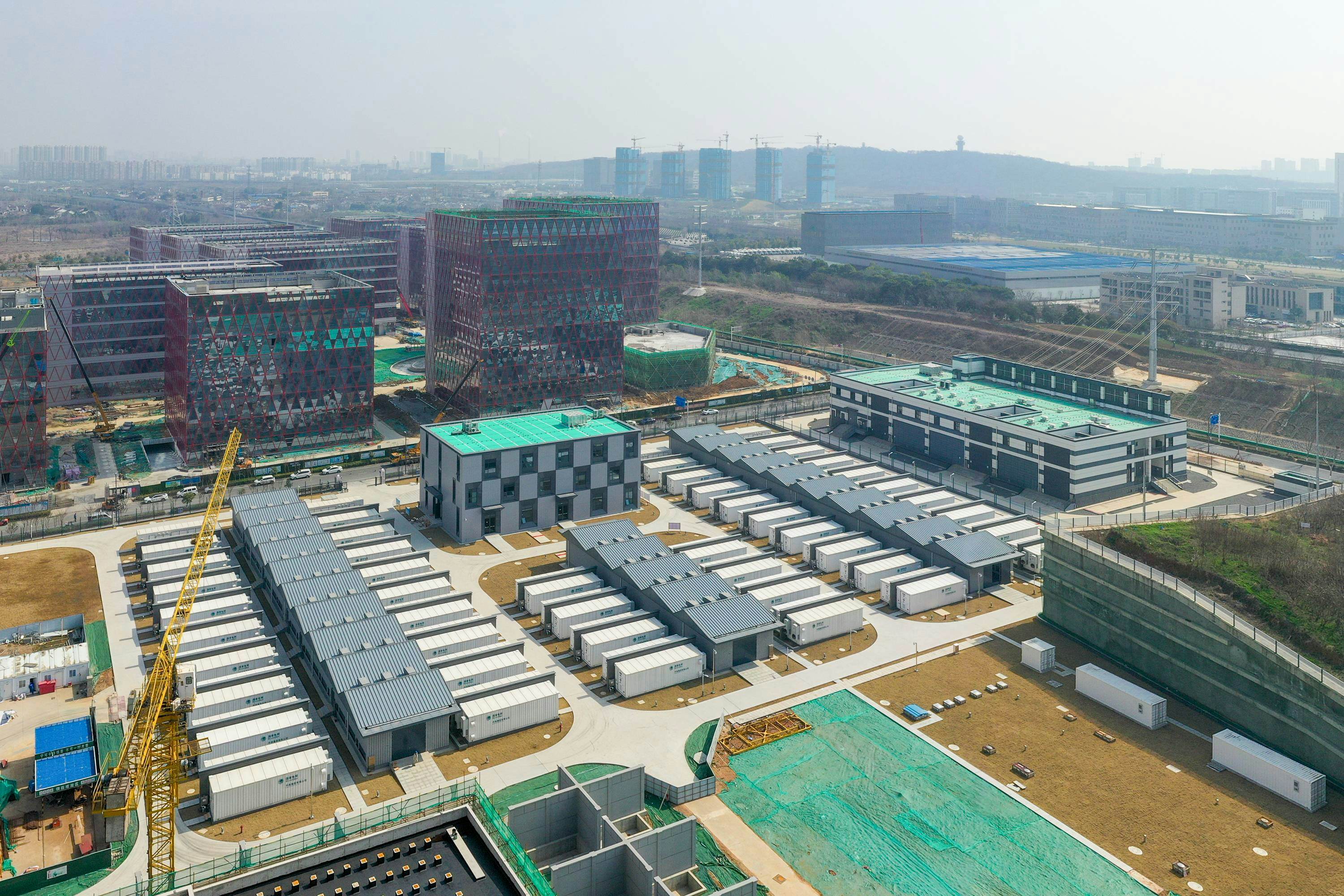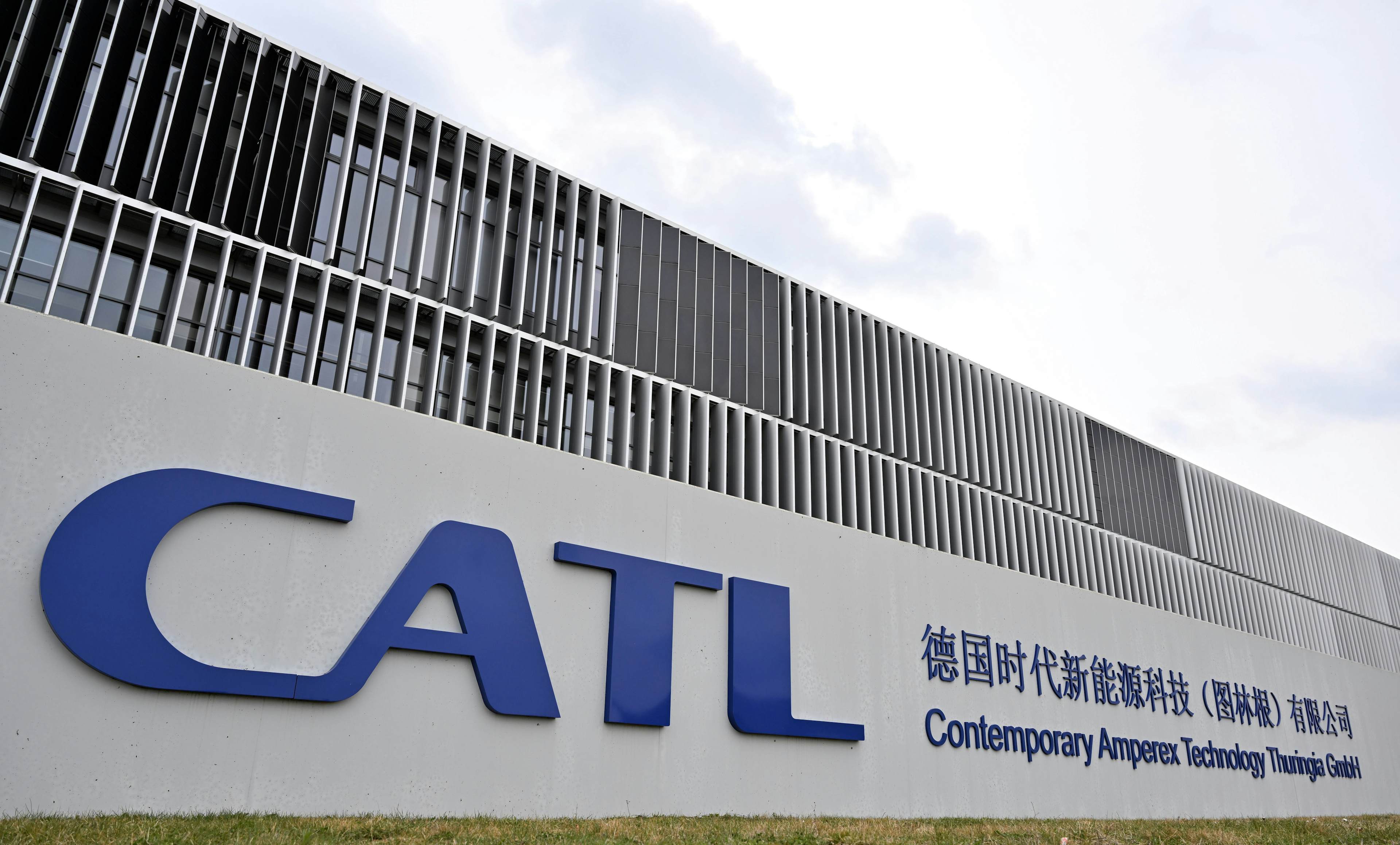
Demand for these batteries is surging, and it will only grow more in coming decades.

WRITTEN By Grace Donnelly
At this point, everyone knows batteries are essential to EVs, but what about the broader effort to electrify everything?
Batteries can provide the grid or individual buildings like hospitals and factories with reliable backup power and also help smooth out the use of renewables, which generate energy intermittently—e.g., when the sun is shining or the wind is blowing.
Many of the solutions for supporting the energy grid today rely on fossil fuels, such as “peaker plants” which are often powered by natural gas and come online during periods of high demand. Batteries offer a cleaner alternative for responding to demand and creating a lower-emission, more resilient grid.
The world will need nearly 600 GWh of battery energy storage by the end of the decade in order to achieve net-zero emissions by 2050, according to estimates from the International Energy Agency (IEA). In 2021, there was less than 60 GWh of battery storage capacity, according to estimates from energy research firms Rho Motion and Wood Mackenzie.
While the vast majority of today’s existing energy storage is handled by pumped hydro projects, lithium-ion batteries are currently the most common tech being used to add new capacity, making up about 93% of all stationary storage installations in 2020, according to the IEA.
Growing markets
Last year, about 25 GWh of energy stationary storage (ESS) capacity was added globally, Iola Hughes, research manager at Rho Motion, told Emerging Tech Brew. For context, that amounts to 10-15% of EV battery demand.
Although the demand for ESS batteries is growing substantially—more than 100GWh of new capacity has been announced for this year and next year—the market is concentrated in just a few regions, Hughes said.
“In terms of new installations in 2021, for example, the US was far ahead of both China and the European market. But it’s worth noting that over 50% of that was coming from California,” she said.
Texas is also working on adding battery capacity, driven in part by the devastating grid failure the state experienced in February 2021.
Just yesterday, battery-maker Contemporary Amperex Technology Co., Limited (CATL) and independent power producer Broad Reach announced more than 900 MWh of new battery systems capacity that will be installed across six projects in the state.
“It really comes down to different regions having different policies in place, which is driving the market. So in the US, nine states now have direct energy storage legislation,” Hughes said. “As more states introduce renewables, you’re going to see, increasingly, storage added as well as an asset.”
In China, requiring new battery capacity alongside new renewable deployments has already sparked ESS growth. Projects to add wind or solar energy need to install stationary storage equivalent to about 5%–20% of the total power generated, depending on the policies of the province.
“For the Chinese market, over the next two years, over 50 GWh of capacity has been announced. Similar story for the US markets—over the next few years you’ve got just under 35 GWh of capacity announced,” Hughes said. “The market is there, and it’s really just getting going.”

Battle for battery materials
This growth in ESS battery demand is ramping up just as automakers are also clamoring for more EV batteries, meaning different types of battery makers are seeking many of the same limited resources.
“There’s always going to be quite a high level of competition between the two of them,” Hughes said. “But one thing that the stationary storage market has working in its favor is the spec of these batteries that are being produced don’t have to be at the same level, potentially, as for the EV market.”
EV makers are focused on achieving high energy density to achieve greater range, while stationary storage batteries are less constrained by weight and space considerations.
Stay up to date on emerging tech
Drones, automation, AI, and more. The technologies that will shape the future of business, all in one newsletter.Subscribe
The lower energy-density requirements for stationary storage batteries mean that manufacturers can opt for materials that have historically been cheaper. ESS battery-makers are largely pursuing lithium iron phosphate (LFP) rather than the nickel manganese cobalt (NCM) batteries used in EVs—a chemistry that avoids the high costs of nickel and cobalt. Automakers are increasingly embracing LFP batteries as well, but they still predominantly use NCM.
Both types of batteries have been affected by the skyrocketing costs of lithium, nickel, and cobalt, but LFP batteries could be less exposed to future price swings in the long-term, Hughes said.
Looking ahead…
Lithium-ion batteries are the best option for stationary storage today, Hughes said, but the high cost of raw materials is driving investment into alternatives.
One of the most promising is sodium-ion batteries, she said.
While the energy density of these batteries is typically too low for EVs, they could offer a lower-cost option for stationary storage applications. Sodium-ion batteries also share a similar design to lithium-ion batteries, making manufacturing less of a challenge.
CATL, the world’s largest battery-maker, announced it plans to have a supply chain for sodium-ion batteries in place by 2023. Hughes said CATL is “going to be in a much stronger position going into the sodium-ion space than probably anyone else.”

Other early-stage battery technologies are being developed for stationary storage applications as well:
- Companies like ESS Inc. and Redflow have announced utility-scale and large industrial projects with flow batteries, which use large tanks of a liquid electrolyte to store energy. These batteries can deliver a consistent amount of less energy over a longer period of time than lithium-ion.
- Metal-air batteries could be used to store energy for days. Form Energy is one startup working on this technology, which turns iron to rust as it discharges and reverses the process when charging.
- Liquid metal batteries use a molten salt electrolyte to separate two metals that transfer ions when the cell is heated to high temperatures. Massachusetts-based startup Ambri is working on these types of batteries, which the company says can store energy for four to 24 hours.
There are also ESS companies bypassing batteries altogether, using heat, gravity, air pressure, and water to store and discharge energy.
Some of these options offer a much longer storage duration than lithium-ion batteries, but Hughes says the majority of ESS needs can be met with the energy storage timeframes today’s batteries already offer.
There are projects in California where lithium-ion batteries will provide eight hours of energy storage, but in most cases today, a four-hour duration is sufficient, she said. Projects using ESS as back-up power may only be relying on batteries for 15 minutes at a time.
“There is some basically, lack of clarity around what would actually be the use case of these technologies,” Hughes said of the longer-duration options. “Potentially if you’re looking at multi-day and even seasonal storage, then some of these technologies do have an application. But you are going to be looking at quite a niche market.”
































